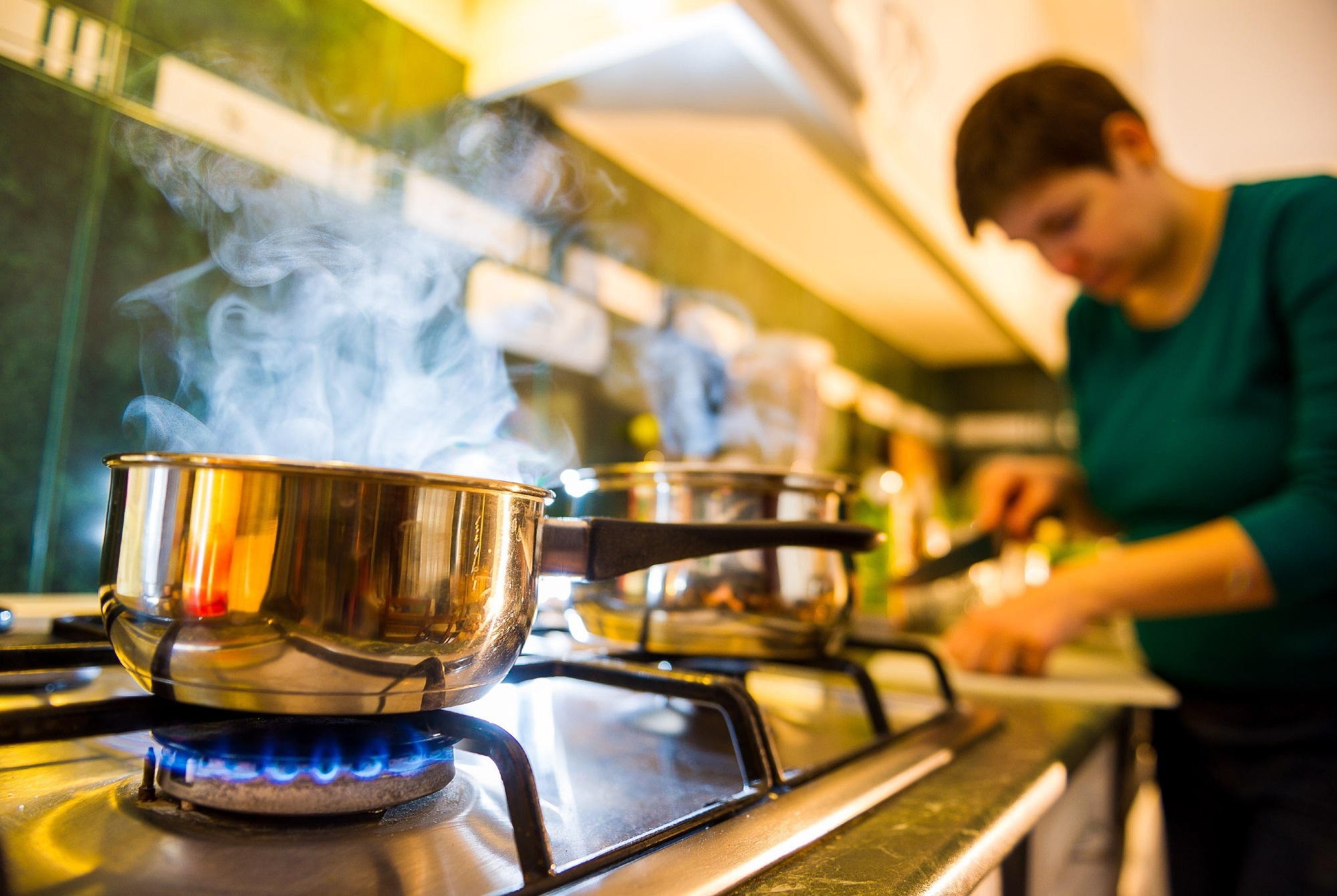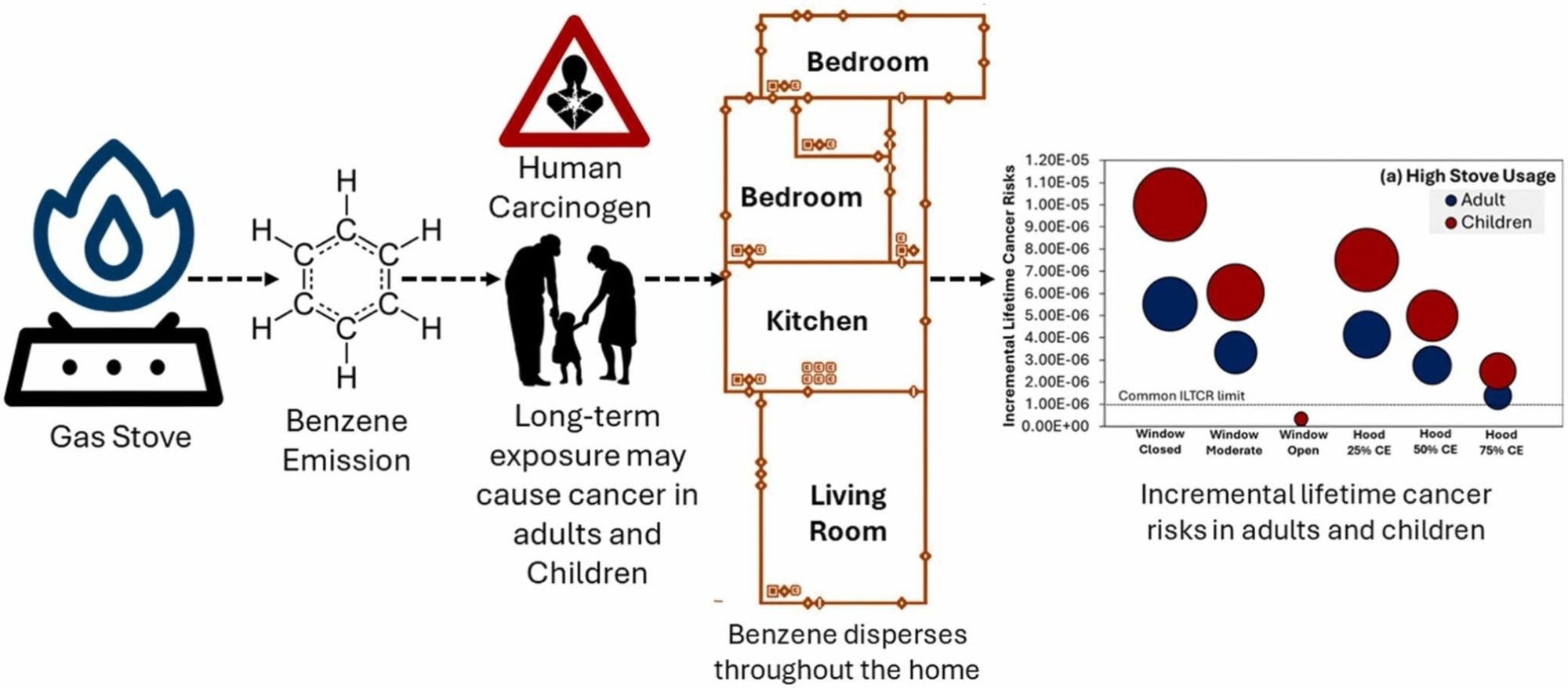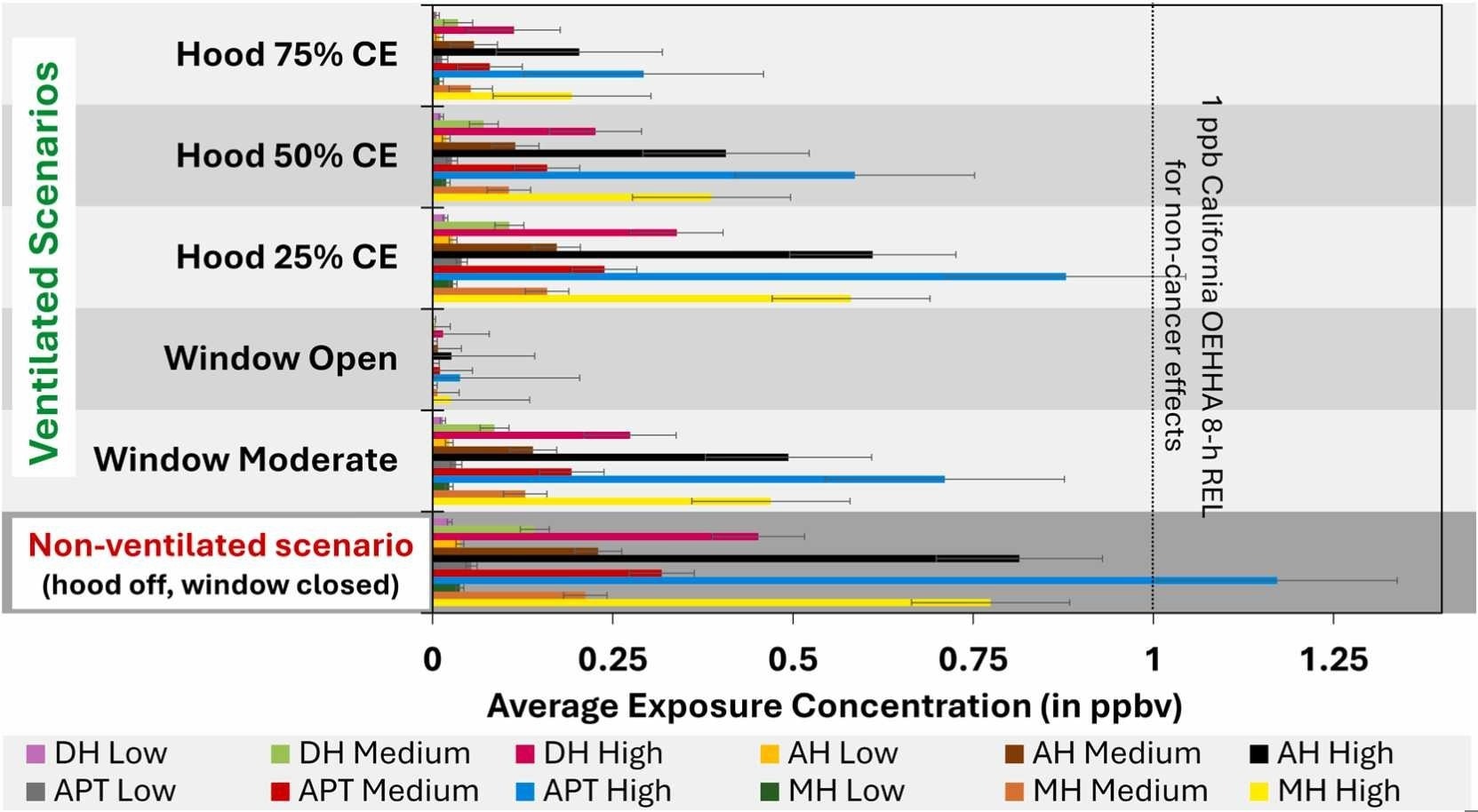New modeling reveals that high-emitting gas stoves can silently spread benzene throughout the entire home, raising cancer risk well beyond the kitchen, especially in small or unventilated dwellings.
 Study: Exposure and health risks of benzene from combustion by gas stoves: A modelling approach in U.S. homes. Image Credit: goodbishop / Shutterstock
Study: Exposure and health risks of benzene from combustion by gas stoves: A modelling approach in U.S. homes. Image Credit: goodbishop / Shutterstock
Gas stoves in the US burn propane or natural gas, producing nitrogen dioxide, formaldehyde, and benzene among the byproducts. Chronic benzene exposure causes leukemia. A recent Journal of Hazardous Materials study examined benzene exposure among Americans using gas stoves.
Introduction
Americans spend 90% of their time indoors and are affected by indoor air pollution. 47 million American households use natural gas stoves, while hundreds of millions of households worldwide cook on gas stoves.
In 2020, there were 474,519 new cases of leukemia worldwide, and 311,594 deaths. In the USA, 2023 saw 59,610 and 23,710 leukemia cases and deaths, respectively, making it one of the top ten causes of cancer deaths.
According to the World Health Organization (WHO), benzene is unsafe at any level. It can cause tiredness, sleepiness, headaches, body pain, tremors, memory loss, eye irritation, and skin allergies.
The Office of Environmental Health Hazard Assessment (OEHHA), part of the California Environmental Protection Agency, set a reference level at 1 part per billion (ppb). Countries like France, Israel, Japan, Peru, and the European Union have set outdoor thresholds between 1.3 and 5 µg/m³.
The current study included 6.3 million Americans using the top 5% of benzene-emitting stoves. They used CONTAM, a model from the National Institute of Standards and Technology, that simulates air quality over multiple indoor zones and has been used to estimate pollutant levels originating indoors.
For the first time, they validated CONTAM’s performance for VOCs, particularly benzene, by comparing predicted vs. measured benzene from indoor sources in residential buildings. Then, they combined earlier benzene measurements from 87 homes with room-based benzene measurements over time in six homes.
CONTAM then simulated benzene concentrations in 24 building layouts between 690 to 2840 square feet. Using USEPA Health Risk Assessment, they estimated health risks at low, medium, and high stove use levels, modified by using open windows, hoods, or both.
Low use meant five minutes cooking at medium flame on a single burner in the morning and two burners in the evening. Medium use included thirty minutes per burner on a medium flame—one burner in the morning and two in the evening—no oven use.
High use indicates medium flame for 41 minutes per burner, two in the morning and four in the evening, with 134 minutes of oven use at 350°F in the evening.

Graphical Abstract
Risk of illness – unventilated condition
With high gas stove use, CONTAM predicted benzene concentrations in the 95th percentile in many of the 24 floor plans, which mixed effectively throughout the house after one or two hours of cooking, leading to significant concentrations in rooms beyond the kitchen. Thus, benzene exposure was highest for small homes (<900 square feet) and high gas stove use without ventilation.
It decreased progressively from apartment homes through manufactured homes and attached homes to detached houses. Bedrooms had the highest risk since people spend a third of their time there.
While calculated long-term non-cancer risks (Hazard Quotients) were low (HQ<1) for all scenarios, benzene concentrations under high gas stove use without ventilation did exceed California's OEHHA 8-hour reference exposure limit (REL), a benchmark for non-cancer effects. Low or medium use did not lead to such exceedances, irrespective of ventilation.
Risk with ventilation
Vented hoods with 25% efficiency reduced the average benzene concentration by about 25%, to three-quarters of the unventilated situation. At 75% efficiency, it was only one-fourth.
Leaving windows open all day caused 95% to 99% of the benzene to dissipate with high and medium use. More realistically, benzene levels dropped by up to 42% with moderate window use—one hour in the morning and afternoon, and two hours at night.
 Daily average benzene exposure concentration (ppbv) for ventilated and non-ventilated scenarios. Hood 25 % CE, 50 % CE, and 75 % CE represent the benzene capture efficiency of the hoods installed in dwellings. In this image, DH Low, DH Medium, and DH High represent benzene concentration in a detached home with low, medium, and high stove usage, respectively. Similarly, APT, MH, and AH indicate apartments, mobile homes, and attached homes, respectively. The error bars in these graphs represent the range of possible benzene exposure concentrations. Note: All these scenarios compared the top 5 % of benzene-emitting gas stoves for U.S. homes.
Daily average benzene exposure concentration (ppbv) for ventilated and non-ventilated scenarios. Hood 25 % CE, 50 % CE, and 75 % CE represent the benzene capture efficiency of the hoods installed in dwellings. In this image, DH Low, DH Medium, and DH High represent benzene concentration in a detached home with low, medium, and high stove usage, respectively. Similarly, APT, MH, and AH indicate apartments, mobile homes, and attached homes, respectively. The error bars in these graphs represent the range of possible benzene exposure concentrations. Note: All these scenarios compared the top 5 % of benzene-emitting gas stoves for U.S. homes.
Cancer risk
The Incremental Lifetime Cancer Risk (ILTCR) refers to the estimated cancer risk caused by a specific pollutant via one pathway—in this case, benzene via inhalation.
High to medium use without ventilation increased the cumulative ILTCR above the WHO safety threshold, IE-06, by 4–16 times. The highest ILTCR was in the apartments with high use. Here, it increased ninefold among adults and 16-fold among children.
Children breathe faster and are lighter than adults, increasing benzene concentrations in their tissues. The estimate is probably low, as it does not factor in the time children spend in the kitchen during stove use.
Moderate gas stove use increased the risk in bedrooms but not in kitchens or living rooms. Low use did not increase the risk, irrespective of ventilation.
Ventilation effects
At high use, moderate window use decreased the cancer risk by more than 25% in an efficiency-vented hood. Both 50% and 75% efficiency hoods reduced but could not eliminate the risk for adults and children.
At medium use, 50% and 75% efficiency hoods substantially reduced cancer risk, though for children, the risk still remained above the WHO threshold even with a 75% efficiency hood.
Leukemia estimates
For the studied population of 6.3 million Americans using the top 5% of benzene-emitting gas stoves, the study estimates an excess of 16–69 more leukemia cases each year when considering scenarios of high gas stove use with no ventilation, the higher number being for apartments. Overall, under these unventilated conditions for this specific high-emitter group, high and medium use are linked to an average of 43 and ~10 cases per year, respectively, vs 1.5 cases with low use.
Conclusions
This study is the first to estimate benzene-driven cancer risk from gas stoves and attributable leukemia risk among those at greatest risk from such exposure.
“Our study found that gas stove exposure increases the risk of cancer, particularly in homes with high and medium stove usage.” This exposure must be curbed to improve public health, especially in small and poorly ventilated houses.
Switching to electric or induction stoves, opening all windows for longer periods, or using high-efficiency hoods while cooking could reduce these risks. However, with high outdoor benzene levels, broader policy measures are required.
The study also validated, for the first time, CONTAM's predictive performance for benzene concentrations and distribution throughout the home. It shows the need to measure all-room indoor exposure to such pollutants since this determines the cumulative risk of attributable cancer.